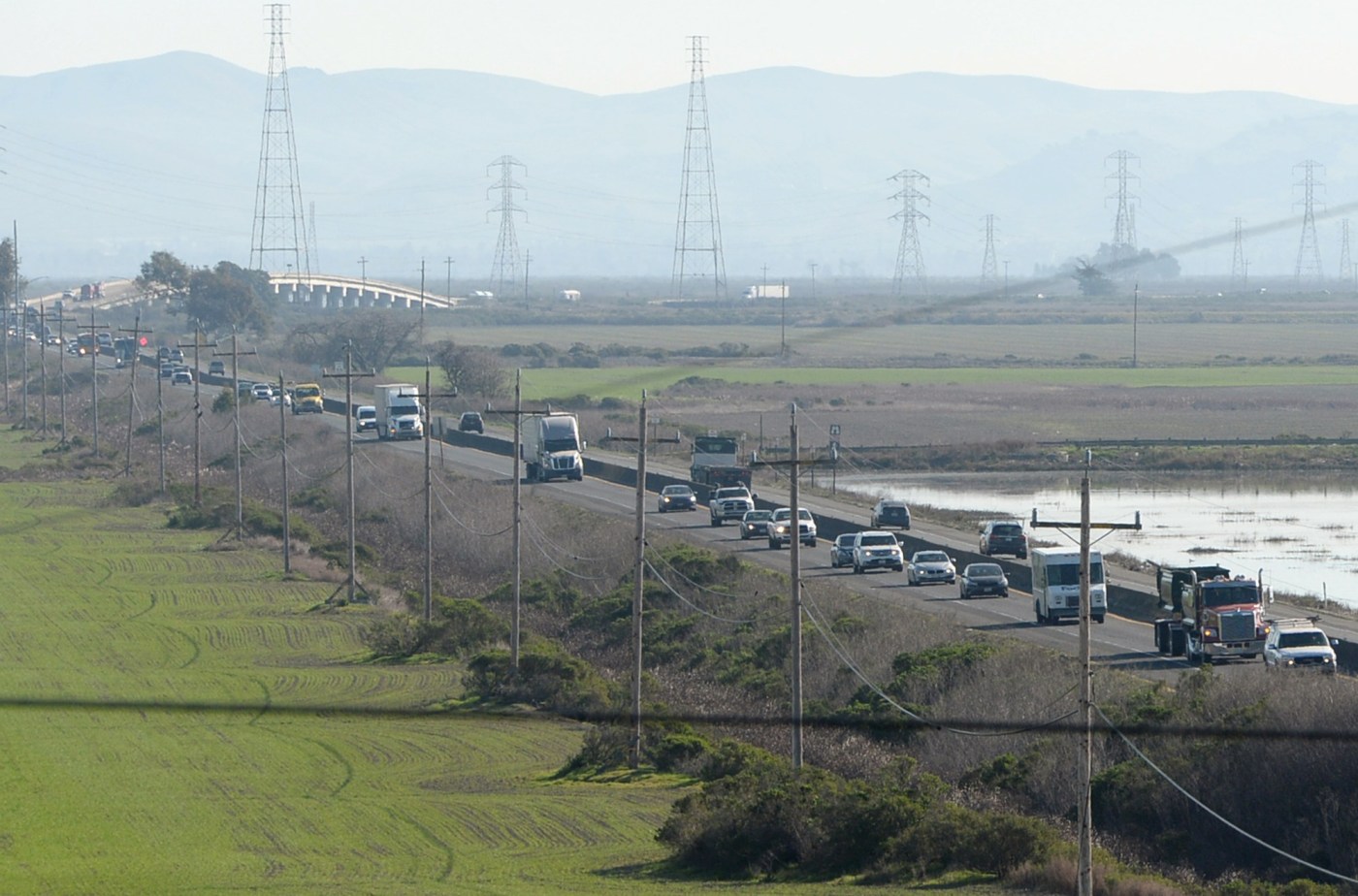
Gov. Gavin Newsom has signed into law a bill that relaxes environmental constraints to speed up a traffic and flood reduction project on Highway 37.
Assembly Bill 697 was introduced by Assemblymember Lori Wilson, a Democrat from Suisun City in Solano County. The legislation signed Tuesday sets up Caltrans, the Metropolitan Transportation Commission and partners in Marin, Sonoma, Napa and Solano counties to begin construction in 2026 on the $500 million, three-phase project.
Related Articles
Newsom vetoes bill restricting use of license plate reader data
Gov. Newsom signs two suicide-prevention bills
New California law requires some ultraprocessed foods to be removed from school lunches
California makes Diwali a state holiday starting in 2026
Gov. Gavin Newsom just banned loud ads on Netflix. Here’s why
“It’s a great relief the governor signed the bill,” Wilson said Wednesday. “This project has been delayed from the very onset, facing some major headwinds — part of it is cost and how do we fund it. But every day that we don’t do something, we are seeing serious negative impacts on the quality of life of the people driving on the road — and many of them are our most vulnerable community members and lowest wage earners.”
The project will widen the highway to two lanes in each direction and fortify a portion of the San Pablo Baylands along a 10-mile stretch between Sears Point and Mare Island. It’s an interim solution while planners work toward what they call the “ultimate project” to raise the entire 21-mile corridor, an undertaking that is years away and expected to cost billions of dollars.
The legislation enables project planners to secure permits from the California Department of Fish and Wildlife for the “incidental take” of four protected species, expanding the annual construction period beyond the seasonal three-month window.
“Incidental take” means to incidentally harm or kill a fully protected species listed by the California Endangered Species Act during construction activity. The protected species in question include the salt marsh harvest mouse, the California Ridgway’s rail, the California black rail and the white-tailed kite.
Without AB 697, work crews would be limited to just 10 to 12 weeks of construction each year, which planners said would lead to higher costs and potentially more disruption of the protected species and their habitat.
“MTC took a support position on AB 697, so of course we’re pleased the governor signed the bill into law,” said John Goodwin, spokesperson for the Metropolitan Transportation Commission. “MTC and the other agencies in the Resilient 37 Partnership are eager to finally start work in 2026 to deliver the mobility, habitat and flood protection improvements for which the people of the North Bay have been waiting so long.”
The highway, which runs between Marin and Solano counties, carries an estimated 40,000 commuters daily. The highway is notorious for its congestion and frequent flooding that sometimes forces closures lasting days.
The project involves replacing the Tolay Creek Bridge, east of the Highway 37 and Highway 121 interchange, and extending an eastbound merge lane for a mile. The project also will restore a 3.5-mile section of degraded tidal salt marsh called Strip Marsh East to help protect against flooding while creating habitat.
Workers will install a tolled eastbound lane and widen the Sonoma Creek Bridge. Westbound improvements would be completed in a third phase.
The project is expected to withstand sea-level rise projections through 2050 and improve travel time and reliability. Construction is expected to begin next fall and continue through winter 2030.
The interim project has faced criticism. Detractors say its too costly for a temporary solution. Some say it undermines progress toward the “ultimate project.”
The Marin Conservation League remains concerned that the negative impacts will outlast the usefulness of the interim project, said Kate Powers, a board member of the organization.
“While we are disappointed in the passage of the legislation, we will now be looking to the Department of Fish and Wildlife to satisfy its conservation standard providing robust oversight of the monitoring and management of take to avoid, minimize and fully mitigate the impacts on the endangered species that will be affected,” said Powers, referring to the incidental take of protected species.
Wilson said the interim project is vital.
“State Route 37 is decades old, and I’m not the first legislator to talk about it, and I won’t be the last,” Wilson said. “I don’t want another 20 years to go by and do nothing.”
Wilson said the interim project addresses both traffic relief and wetland restoration, providing “some level of fix while we still work to fund the ‘ultimate project.’”
“With the interim project, at least progress will have been made and (AB) 697 represents that progress,” Wilson said.
Marin County Supervisor Stephanie Moulton-Peters, vice chair of the Metropolitan Transportation Commission, said AB 697 allows the project to move forward with minimal disruption to the environment.
“The project delivers equity, environmental restoration and congestion relief to a region in the North Bay that needs and deserves it,” Moulton-Peters said.